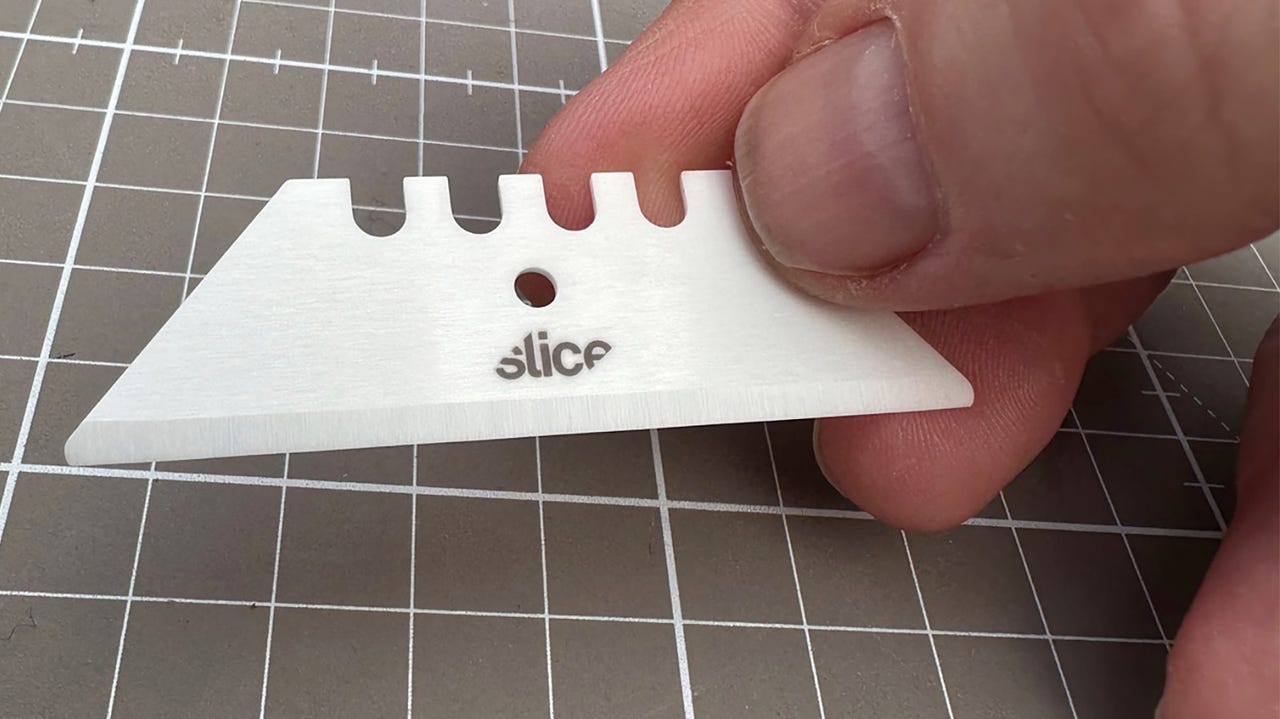
Slice zirconium oxide ceramic utility blades have many advantages over metal blades. Adrian Kingsley-Hughes/ZDNET
I open a lot of boxes and cut a lot of cardboard. I used to use knives with metal blades — from penknives to the ubiquitous Stanley box cutter — but found that cutting the card and tape would blunt them super quickly.
Then, a couple of years ago, I shifted to ceramic cutters made by Slice, and I’ve not looked back.
Also: This pocket-friendly tool replaced a full set of open-end wrenches for me
I started using a small Slice box cutter, which was great for opening boxes and packages, and it did many months of hard cutting without getting worn down in the least.
But it had a couple of downsides. The blade was a bit short for cutting thick cardboard, especially the heavily corrugated stuff. The handle was also small and not really suited to putting much power into the cut.
What I wanted was a blade that combined the size of a box cutter utility blade with the durability of ceramic.
Also: This $11 gadget is a must-have for aging eyes
Slice had me covered, with its own ceramic utility blades.
These blades are made of zirconium oxide ceramic, which is extremely hard and allows for a powerful cutting blade but are also finger-safe, as well as much less likely to cause laceration injuries than metal blades. The blade feels oddly dull to the touch, but it effortlessly cuts through materials such as cardboard, rubber flooring, and corrugated plastic.
The ceramic is considerably harder than stainless steel and lasts 11 times longer, which means fewer blade changes or sharpening. In turn, this reduces injury risk and saves time and money.
Also: 5 tech gadgets I never leave home without
Ceramic blades have a lot of other advantages.
Ceramic blades have a number of advantages over metal blades. Adrian Kingsley-Hughes/ZDNET
These blades will never rust, don’t have any oil coating to contaminate the things they cut, are chemically inert, won’t cause any sparks when they hit metal, are non-magnetic, and won’t conduct electricity.
They also feature a rounded tip so as to reduce the chances of a puncture injury.
The rounded tip dramatically reduces the chances of injury. Adrian Kingsley-Hughes/ZDNET
These blades are a standard size and shape. They will not only fit Slice utility handles and scrapers, but also fit standard utility knife handles.
Or, you can do what I did and 3D print a handle for the blade.
I 3D printed a handle for my Slice ceramic blades. Adrian Kingsley-Hughes/ZDNET
Slice blades might seem expensive — $19 for two, which is what you might pay for 100 decent-quality metal utility blades — but the long-term performance that they offer combines with all the safety features and advantages they have over metal blades, I believe that they are worth the price.
Also: How to get into 3D printing without breaking (too many) things
I don’t think I’ll go back to using metal utility blades again.
Stay connected with us on social media platform for instant update click here to join our Twitter, & Facebook
We are now on Telegram. Click here to join our channel (@TechiUpdate) and stay updated with the latest Technology headlines.
For all the latest Technology News Click Here
